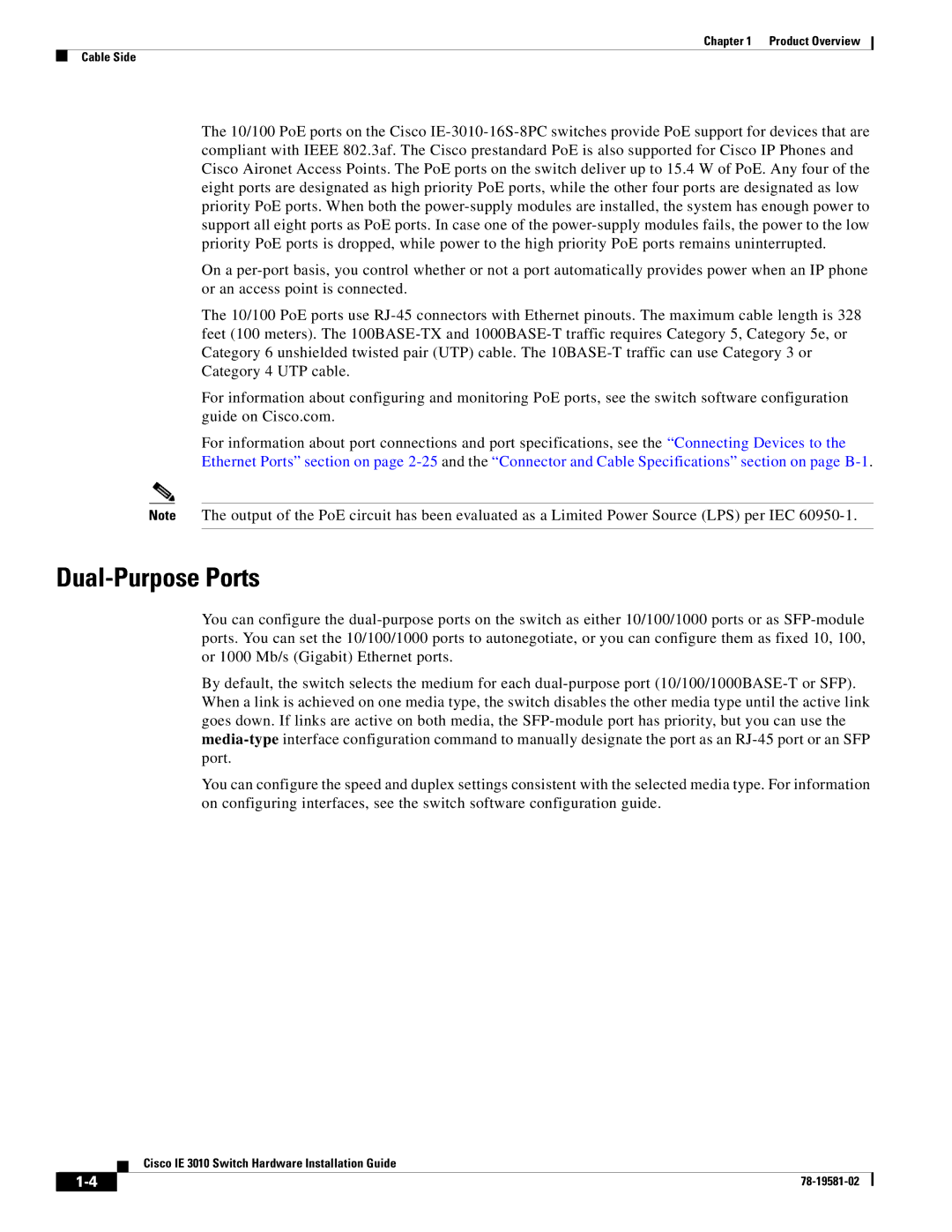Chapter 1 Product Overview
Cable Side
The 10/100 PoE ports on the Cisco IE-3010-16S-8PC switches provide PoE support for devices that are compliant with IEEE 802.3af. The Cisco prestandard PoE is also supported for Cisco IP Phones and Cisco Aironet Access Points. The PoE ports on the switch deliver up to 15.4 W of PoE. Any four of the eight ports are designated as high priority PoE ports, while the other four ports are designated as low priority PoE ports. When both the power-supply modules are installed, the system has enough power to support all eight ports as PoE ports. In case one of the power-supply modules fails, the power to the low priority PoE ports is dropped, while power to the high priority PoE ports remains uninterrupted.
On a per-port basis, you control whether or not a port automatically provides power when an IP phone or an access point is connected.
The 10/100 PoE ports use RJ-45 connectors with Ethernet pinouts. The maximum cable length is 328 feet (100 meters). The 100BASE-TX and 1000BASE-T traffic requires Category 5, Category 5e, or Category 6 unshielded twisted pair (UTP) cable. The 10BASE-T traffic can use Category 3 or Category 4 UTP cable.
For information about configuring and monitoring PoE ports, see the switch software configuration guide on Cisco.com.
For information about port connections and port specifications, see the “Connecting Devices to the Ethernet Ports” section on page 2-25and the “Connector and Cable Specifications” section on page B-1.
Note The output of the PoE circuit has been evaluated as a Limited Power Source (LPS) per IEC 60950-1.
Dual-Purpose Ports
You can configure the dual-purpose ports on the switch as either 10/100/1000 ports or as SFP-module ports. You can set the 10/100/1000 ports to autonegotiate, or you can configure them as fixed 10, 100, or 1000 Mb/s (Gigabit) Ethernet ports.
By default, the switch selects the medium for each dual-purpose port (10/100/1000BASE-T or SFP). When a link is achieved on one media type, the switch disables the other media type until the active link goes down. If links are active on both media, the SFP-module port has priority, but you can use the media-typeinterface configuration command to manually designate the port as an RJ-45 port or an SFP port.
You can configure the speed and duplex settings consistent with the selected media type. For information on configuring interfaces, see the switch software configuration guide.
Cisco IE 3010 Switch Hardware Installation Guide

